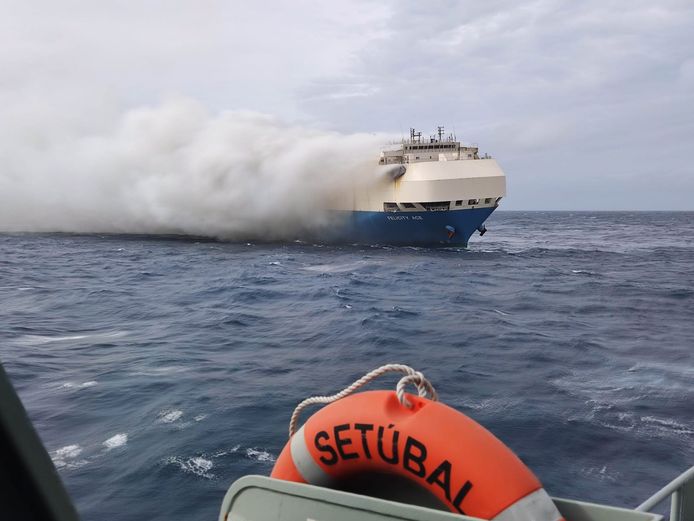After the disaster of the Felicity Ace, a freighter that sank early last year after an electric car on board caught fire, there has been a debate about whether electric cars are safe enough to take on ferries. Now the Norwegian shipping company was the first to announce the ban.
The debate about the allegedly high risks of electric cars in parking garages, but also on ships, for example, has been going on for some time. However, the situation became more volatile after the freighter Felicity Ace caught fire last year with hundreds of expensive Bentleys, Lamborghinis, Porsches and a number of electric cars on board. The latter is suspected of causing the conflagration.
Ironically, shipping company Havila Kystruten from the electrified country of Norway (nearly 80 percent of newly registered cars had an electric motor in 2020) now bans electric, hybrid and hydrogen vehicles on its ferries. Ferries run along the coast from Kirkenes to Bergen on the so-called “postal boat route”, which is popular with tourists.
a look. Footage from the Portuguese Air Force showed the evacuation of the crew of the Felicity Ace
“Fire on board is very complicated”
to me Norwegian media The shipping company reported that any fire on board would result in a salvage operation too complex for the ship’s crew to handle. The reason for the ban appears to be Felicity Ace’s drowning.
Although electric vehicles pose no greater fire risk than combustion engine vehicles, these types of fires are different and, above all, more difficult to put out. In particular, a much larger amount of fire extinguishing water is required for this. While a burning petrol or diesel car can be extinguished using 1,600 to 2,000 liters of water, an e-car often requires up to 11,000 liters – mainly to cool the burning battery.
In extreme cases, the burning electric vehicle is plunged to the upper edge into the fire extinguishing water, for example in a container. An effort that is hardly possible on a ship.
At the moment, the freight company Havila has spoken only in favor of a ban on electric cars on board. It is not yet known if other ferry companies will follow suit.
TT-Line does exactly the opposite
Curiously, the TT-Line freight company, which operates between Sweden, Lithuania, Poland and Germany, also follows the exact opposite path.
The company installs charging stations for electric cars on board its ships. These so-called “green ships” are equipped with 32 charging stations that charge the vehicle’s batteries with direct current of 40 kW or 11 kW of alternating current while sailing.
Unlimited free access to Showbytes? which can!
Log in or create an account and never miss a thing from the stars.

“Total coffee specialist. Hardcore reader. Incurable music scholar. Web guru. Freelance troublemaker. Problem solver. Travel trailblazer.”










More Stories
Bitcoin price rises after new jobs data from US
European stock markets open higher | beursduivel.be
Russia’s oil imports to China decline